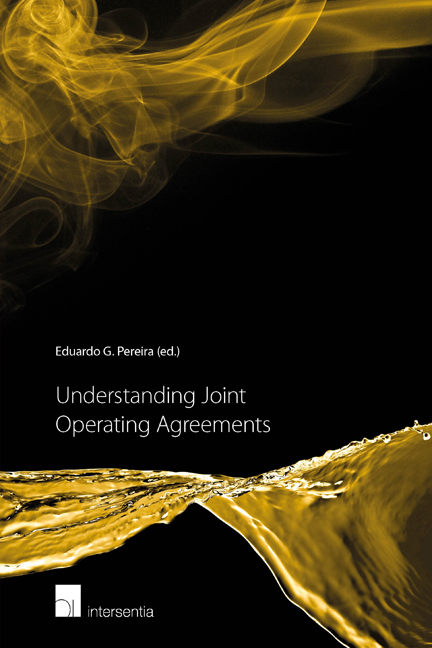PART II - SETTING UP A JOA
Published online by Cambridge University Press: 15 December 2017
Summary
Oil and gas resources will almost always be owned by the host government(s) of the country(ies) where these natural resources are located. If a company has an interest in searching for and producing oil and gas, it is necessary for them to obtain permission from the relevant host government. Petroleum licences, production sharing agreements (PSAs), service agreements or combinations of these all exist as established ways to grant this authorisation, and without them the contracting party has no possibility of conducting exploration and production operations.
Oil and gas projects are likely to be technically challenging and capital intensive. There is a long lead-time from initial investment until revenues can be collected. Quite oft en petroleum activities are carried out in harsh and hostile natural environments and remote areas. As a natural consequence, this increases the challenges of finding and agreeing on adequate technical solutions, cost planning and financing, and risk management.
Although it is possible to negotiate and sign a host government contract with a single entity, this is unlikely to happen. The inherent risks in the petroleum industry encourage oil and gas companies to share risks and rewards through joint ventures. This forms the background for the JOA (i.e. unincorporated joint venture), which is basically an instrument to regulate the relationship between JV parties.
Part II of this book is divided into two subsections. The first subsection covers general clauses in the JOA, such as the scope, insurance, transfer of interest, governing law and dispute resolution, exclusive operations, and HSE. The second subsection addresses the control of operations and expenses.
Why two subsections, rather than grouping all of these chapters into only one category? To answer this question it is necessary to understand the basic background of most JOAs.
An operator acts on behalf of each party to the consortium when directing joint operations. This typical relationship formed by the JOA allows one party to conduct and manage the operation of said consortium, but understandably causes non-operators to see this as a primary concern as they will not conduct these operations and all JOA parties will be affected by each operation and desire to control operations.
- Type
- Chapter
- Information
- Understanding Joint Operating Agreements , pp. 157 - 160Publisher: IntersentiaPrint publication year: 2016



